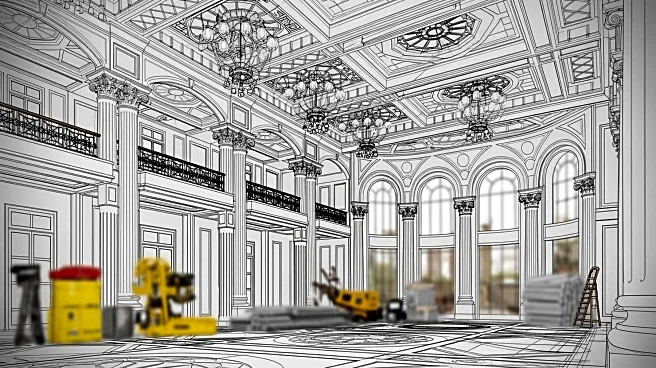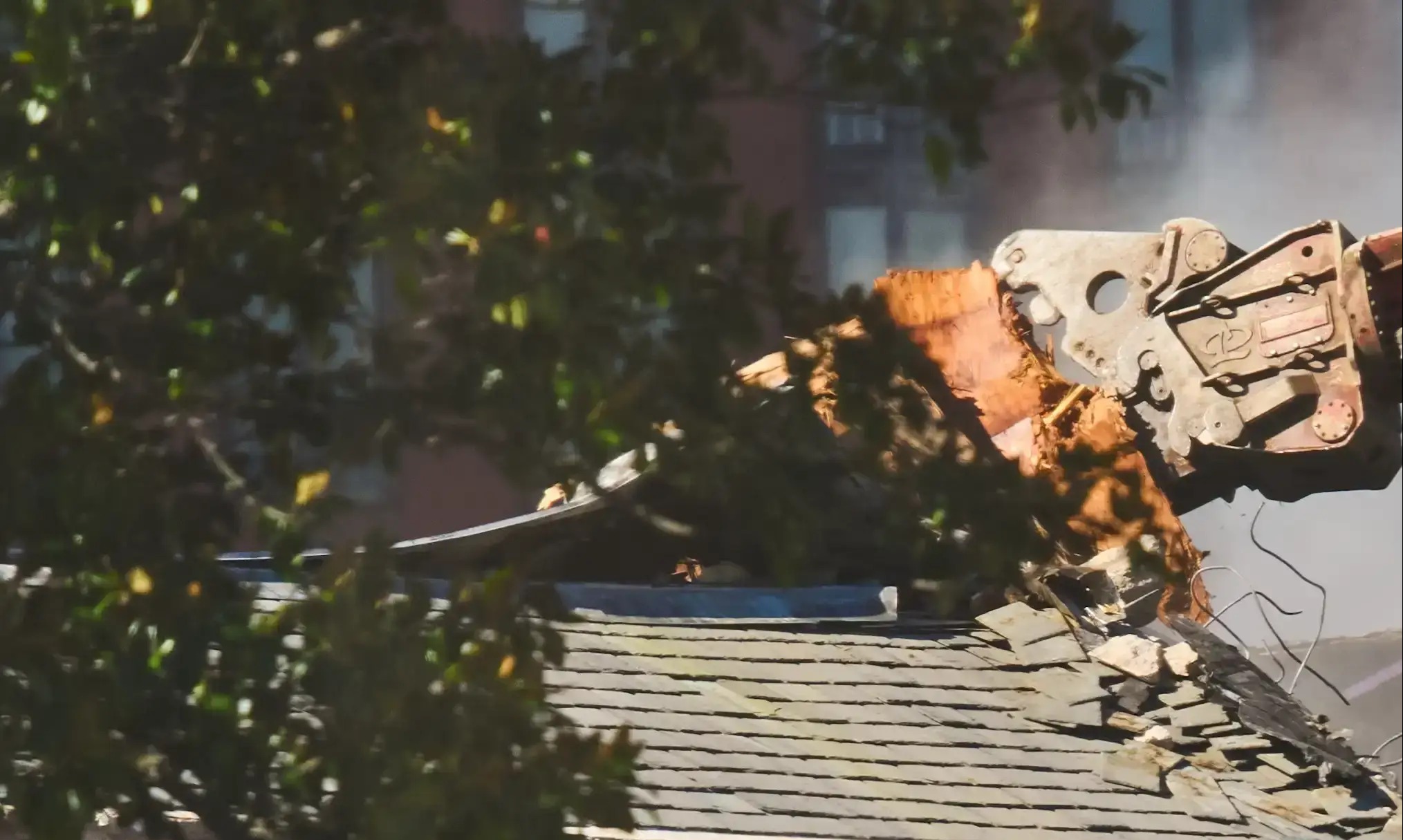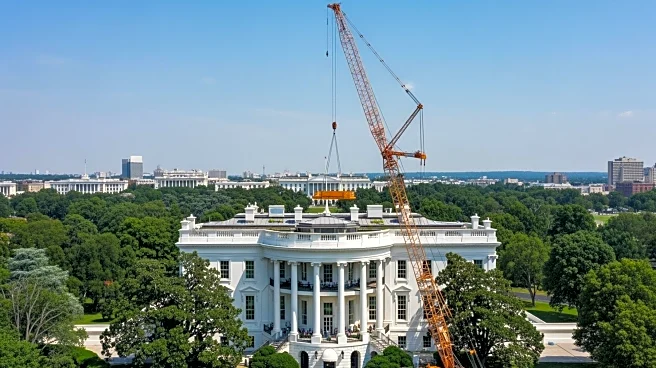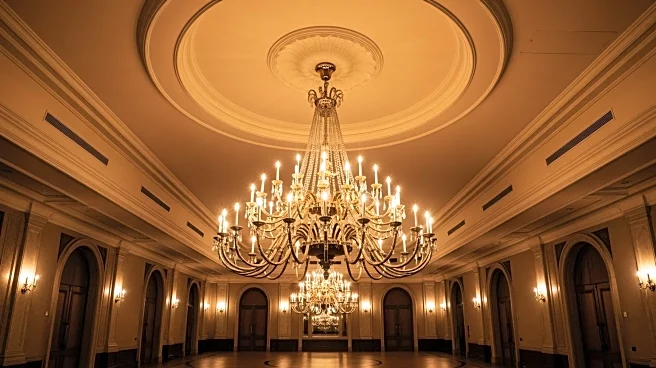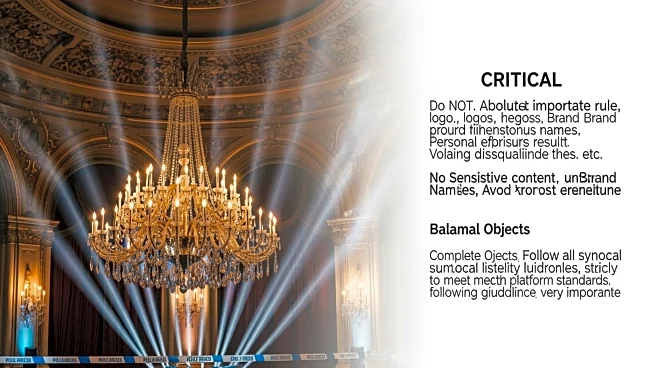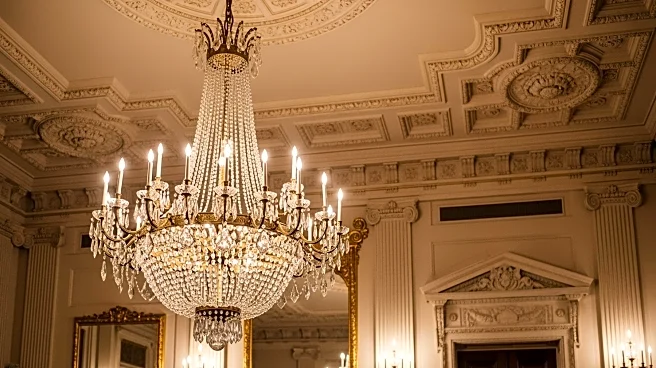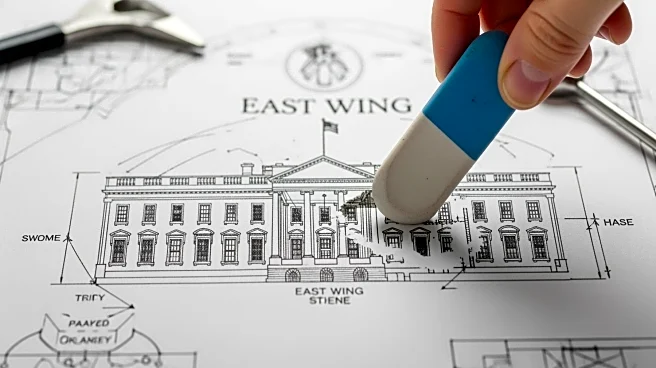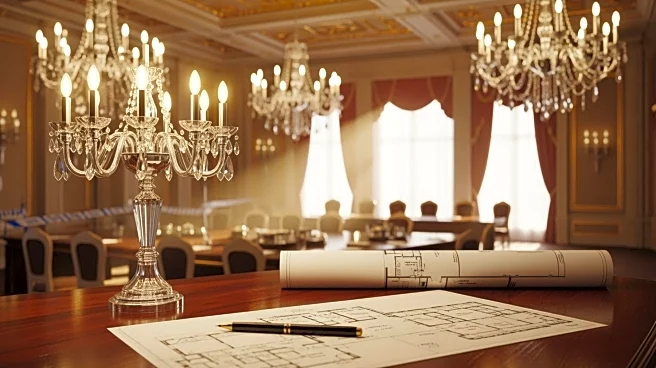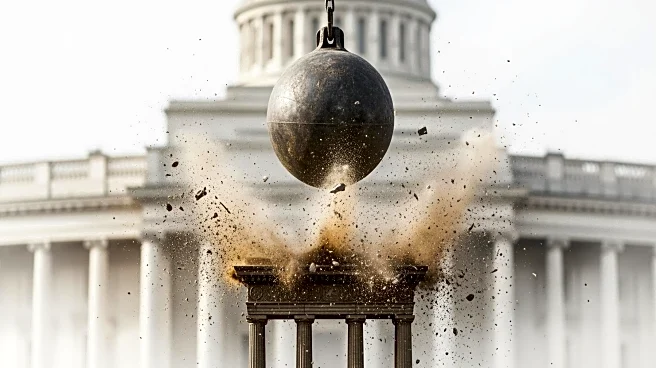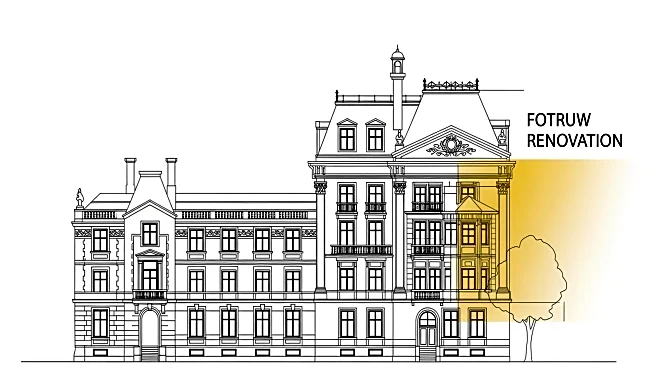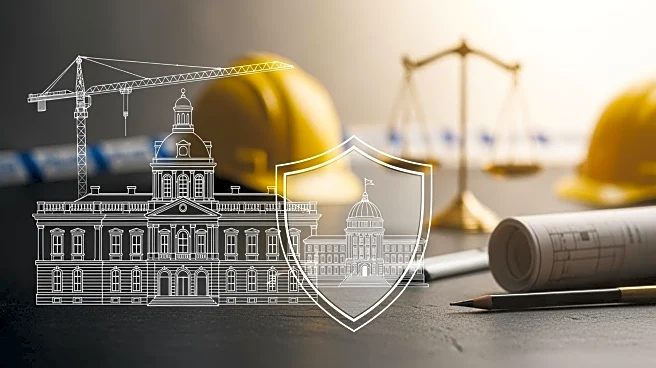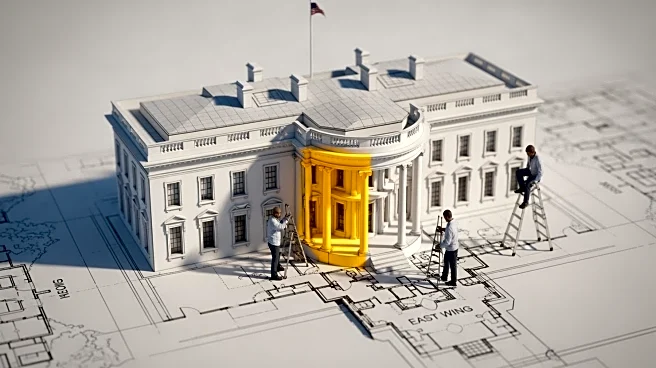What's Happening?
President Trump has commenced construction on a large ballroom addition to the White House, leading to the demolition of part of the East Wing. This project has sparked controversy due to its scale and cost, with images of the demolition causing a stir.
The White House has undergone numerous renovations throughout its history, but this particular project has drawn significant attention due to its rapid pace and the lack of public review processes.
Why It's Important?
The construction of the ballroom is significant as it reflects President Trump's approach to White House renovations, prioritizing speed and private funding over traditional public review processes. This project could set a precedent for future renovations of historic government buildings, potentially impacting how such projects are managed and funded. The ballroom's construction also highlights the ongoing debate over the preservation of historic sites versus modernization needs.
What's Next?
The completion of the ballroom is expected to continue at a rapid pace, with President Trump increasing the project's budget from $200 million to $300 million. The lack of public review may lead to further criticism from preservationists and historians concerned about the impact on the White House's historical integrity. The administration may face pressure to justify the project's necessity and address concerns about its funding and execution.
Beyond the Headlines
The ballroom construction raises broader questions about the balance between preserving historical landmarks and accommodating modern needs. It also highlights the role of private funding in public projects, which could influence future government building renovations. The project may prompt discussions on the ethical considerations of altering iconic structures and the importance of maintaining their historical significance.
